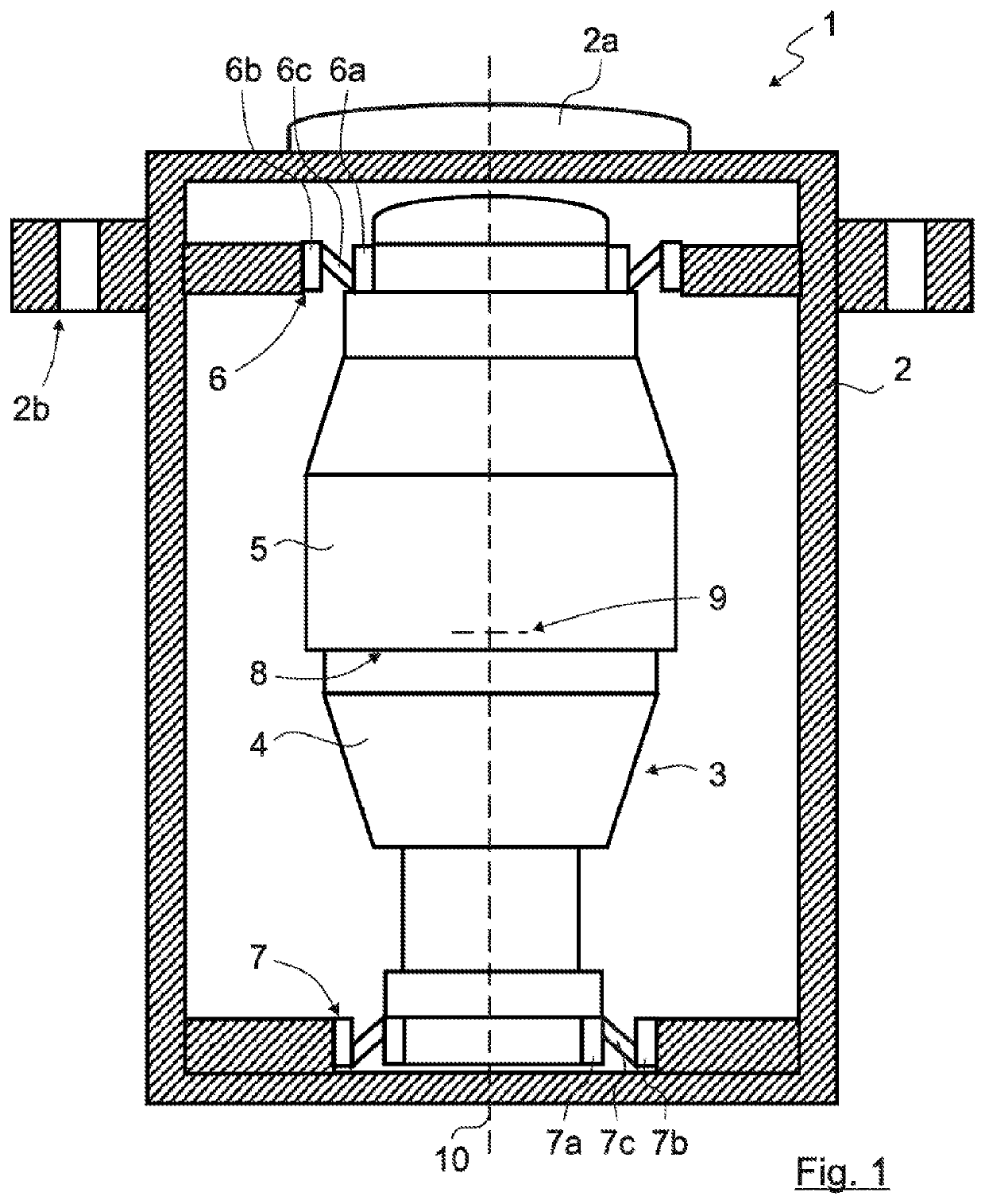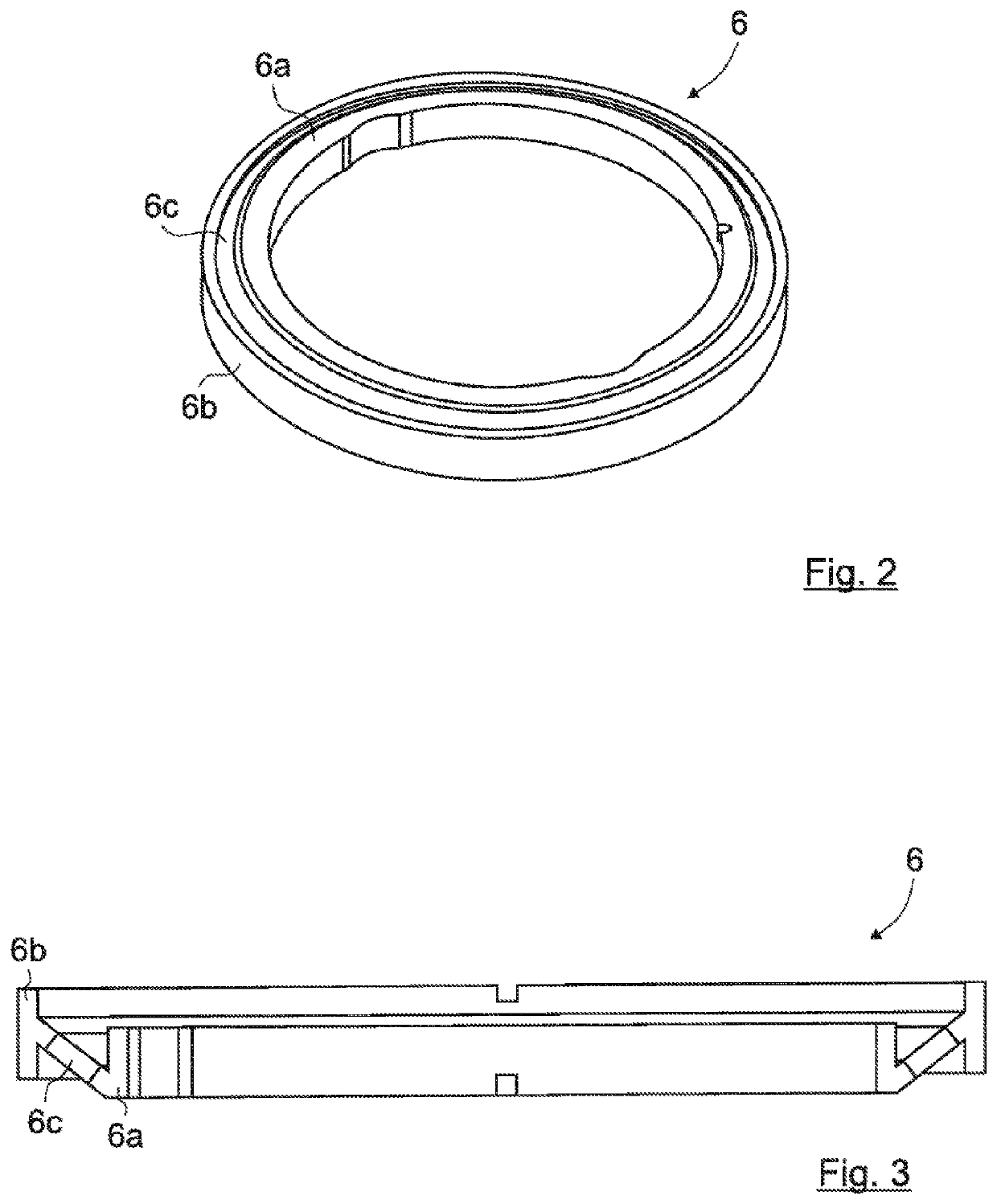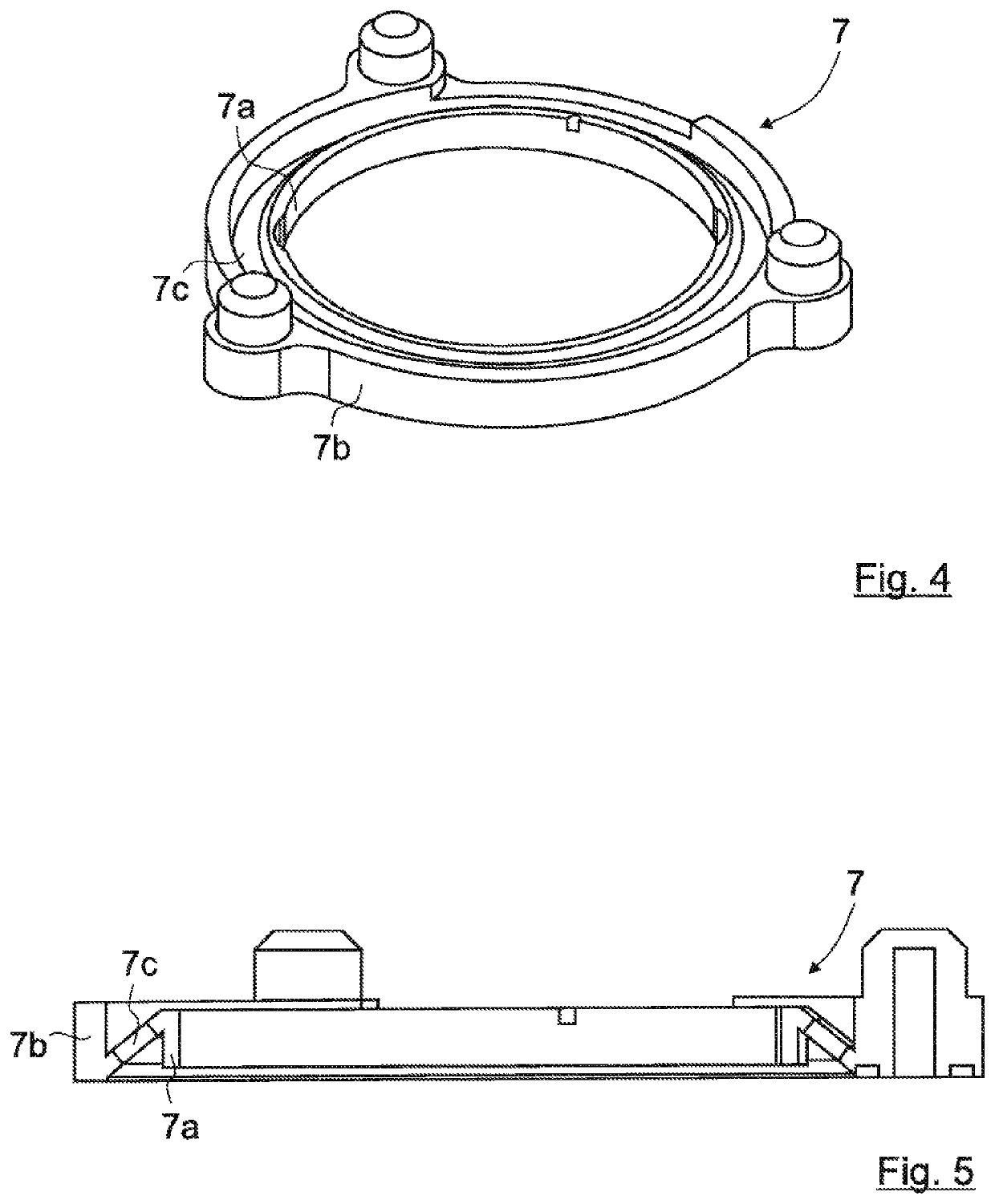Camera system
a camera system and camera body technology, applied in the field of cameras, can solve the problems of high environmental stress, damage to parts or components of cameras, and the inability to meet the requirements of line of sight, and achieve the effect of high acceleration
- Summary
- Abstract
- Description
- Claims
- Application Information
AI Technical Summary
Benefits of technology
Problems solved by technology
Method used
Image
Examples
Embodiment Construction
[0053]Functionally identical elements are provided with the same reference signs in the figures.
[0054]FIG. 1 shows a camera system 1 according to the invention comprising a housing 2 and an optoelectronic sensor unit 3 arranged in the housing 2 having at least one detector device 4 and at least one optical unit 5 connected upstream of the at least one detector device 4, wherein the optoelectronic sensor unit 3 is elastically suspended or mounted in relation to the housing 2. The housing 2 furthermore has a window 2a and an interface 2b, for example, for installation on a vehicle or aircraft.
[0055]The optoelectronic sensor unit 3 is connected via at least two elastic mounting devices 6, 7 to the housing 2. In the present exemplary embodiment, the two elastic mounting devices 6, 7 are embodied as ring-shaped or circumferential. In further exemplary embodiments (not shown), however, still other approaches are conceivable.
[0056]As is apparent from FIG. 1, at least one first elastic moun...
PUM
| Property | Measurement | Unit |
|---|---|---|
| pressure | aaaaa | aaaaa |
| rigidity | aaaaa | aaaaa |
| center of gravity | aaaaa | aaaaa |
Abstract
Description
Claims
Application Information
 Login to View More
Login to View More - R&D
- Intellectual Property
- Life Sciences
- Materials
- Tech Scout
- Unparalleled Data Quality
- Higher Quality Content
- 60% Fewer Hallucinations
Browse by: Latest US Patents, China's latest patents, Technical Efficacy Thesaurus, Application Domain, Technology Topic, Popular Technical Reports.
© 2025 PatSnap. All rights reserved.Legal|Privacy policy|Modern Slavery Act Transparency Statement|Sitemap|About US| Contact US: help@patsnap.com



